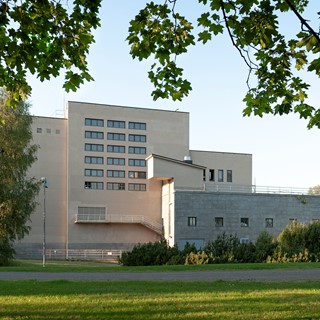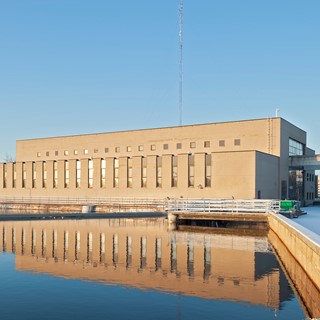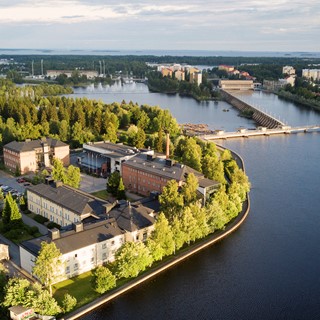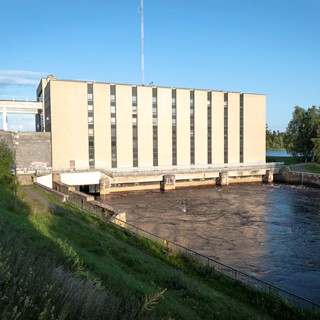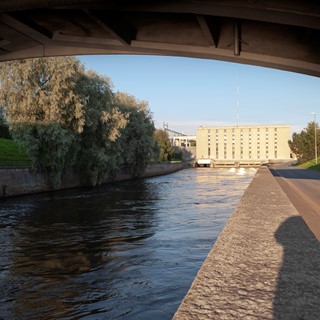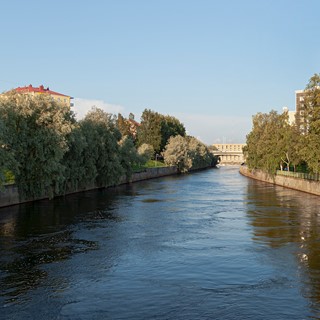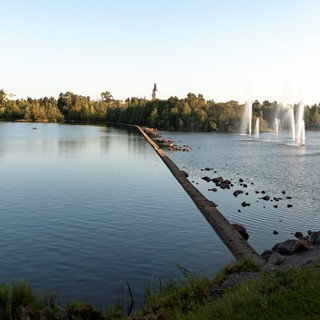Merikoski
Merikoski hydroelectric power plant was built on the Merikoski rapids at the mouth of the River Oulujoki and was completed in 1948. The power plant, designed by Bertel Strömmer, was built as an independent project by the city of Oulu.
History
Before the power plant was built, Merikoski was used for fishing salmon. It was also an important route for boats that brought tar from the hinterland. The power plant also has a long history. A local detailed plan for Tuira, drafted by Bertel Jung in 1914 already had an area reserved for the power plant and canals.[1]
Plans for the actual power plant were first drafted in 1919 but the plant could not be built at that time because of the Water Rights Act of 1902. Things changed in the 1930s when the amendment of 1939 made it possible to build hydroelectric power plants on the Oulujoki. The building of Merikoski started in the fall of 1939. Construction was put on halt because of the Winter War of 1939-1940, but after the peace treaty in 1940 the project went on.[2]
Calculations indicated that Merikoski would produce more electricity than the city needed. The excess electricity could then be sold to a larger region in Oulu. This guaranteed that the power plant would be financially profitable. The most important goal was, however, to attract more industry to the area with reliable electricity supply.[3]
The architect for the actual power plant was decided through a competition, that was won by Bertel Strömmer. The concrete framed power house, designed by Strömmer, was finished in 1948.[4] The concrete dams equipped with floodgates were also finished in the same year[5]. The first set of machinery was put into operation in May 1948. The second one was started later in 1948 and the third in 1954.
Local detailed plan for the Koskikeskus District was implemented in accordance with a plan drafted by Architect Alvar Aalto between 1942-1943. The plan was established in 1949. Oulu´s first City Architect, Martti Heikura, designed a part of the tower blocs in the area as well as the stands for the Raatti stadium and the swimming hall.[6]
The power plant, working in full power, immediately produced financial surplus. In 1953, the surplus was 100 685 000 Finnish Marks (about 3 million Euros). So, in addition to electricity, Merikoski made the city of Oulu more prosperous.[7]
[1] http://www.rky.fi/read/asp/r_kohde_det.aspx?KOHDE_ID=2081
[2] Matti Enbuske. Pohjois-Pohjanmaan ympäristöhistoria. Oulu: Pohjois-Pohjanmaan ELY-keskus ympäristö ja luonnonvarat -vastuualue, 2010, 313
[3] Matti Enbuske. Pohjois-Pohjanmaan ympäristöhistoria. Oulu: Pohjois-Pohjanmaan ELY-keskus ympäristö ja luonnonvarat -vastuualue, 2010, 314
[4] http://www.rky.fi/read/asp/r_kohde_det.aspx?KOHDE_ID=2081
[5] Matti Enbuske. Pohjois-Pohjanmaan ympäristöhistoria. Oulu: Pohjois-Pohjanmaan ELY-keskus ympäristö ja luonnonvarat -vastuualue, 2010, 313
[6] http://www.rky.fi/read/asp/r_kohde_det.aspx?KOHDE_ID=2081
[7] Matti Enbuske. Pohjois-Pohjanmaan ympäristöhistoria. Oulu: Pohjois-Pohjanmaan ELY-keskus ympäristö ja luonnonvarat -vastuualue, 2010, 315
Techical information
Owner: Oulun Energia Oy
Built: 1939-1948, sets of machinery taken into use 1954
Designer: Bertel Strömmer, architect
Capacity: 40 MW, head 11 m
Power house: concrete frame, cladded with plastered brick
Specialities: Part of Oulu´s Koskikeskus -district, longitudal side dam that splits the river
Protection status: Protected with local detailed plan, classified as RKY (Nationally significant built cultural environment - RKY 2009: Hydro power plants in Oulujoki and Sotkamo routes) [8]
[8] Veli-Pekka Huhmo. Oulujoen vesistön voimalaitosarkkitehtuuria. Oulu: Humanpolis Oy, 2017, 74
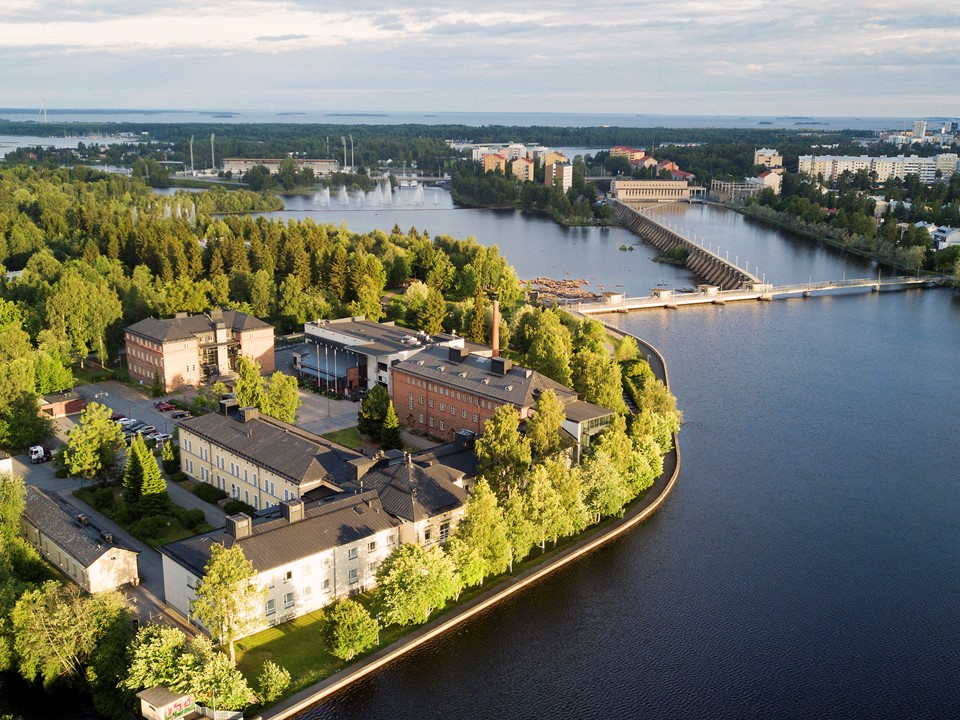
test
Images
All pictures below are part of the power plant's history. All images are copyrighted. You may use the images for personal use but the images may not be used in commercial contexts or printed matter without our permission. Click on the pictures to enlarge them.
Stories
Here you can read other people's stories about the power plant. And if you have your own story, please share it. Whether you want it to be published on the site or not, we are interested in all stories.
Do you have a story about the powerplant or life around the river?
Send us your story
